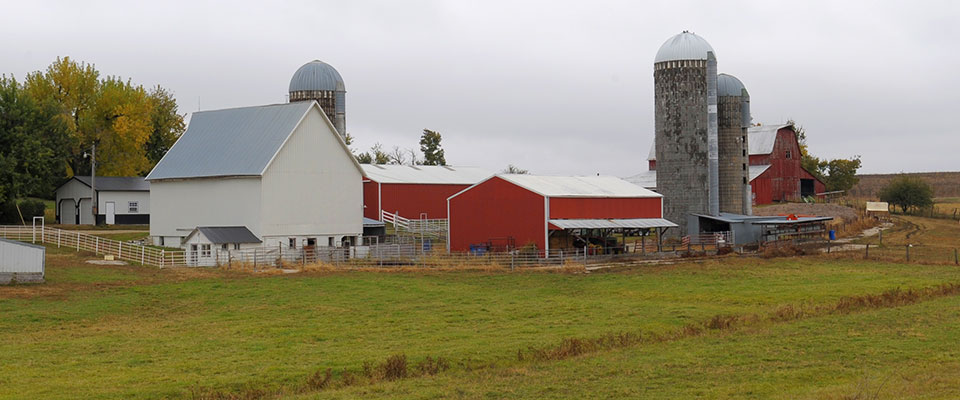
Kansas 2024 net farm income is projected to increase 21%, but net cash income will decrease by 14%, according to an outlook recently published by the Rural and Farm Policy Analysis Center.
Report: Kansas Farm Income Outlook comparable to 2023, say K-State economists
Uncertainty still underlies most farm income projections
At a glance: Kansas 2024 net farm income is projected to increase 21%, but net cash income will decrease by 14%, according to an outlook recently published by the Rural and Farm Policy Analysis Center.
More information: Jenny Ifft, jifft@ksu.edu,; Joe Parcell, jparcell@ksu.edu
Related: AgManager (K-State Department of Agricultural Economics) | Kansas Farm Income Outlook (Spring, 2024) | Rural and Farm Policy Analysis Center
April 16, 2024
By Pat Melgares, K-State Research and Extension news service
MANHATTAN, Kan. – In an unusual twist, Kansas State University agricultural economists are reporting divergent paths for net farm income and net cash income in the coming year.
Jenny Ifft, the Flinchbaugh Agricultural Policy Chair at K-State, said it is rare that the two measures of farm revenue move in different directions.
“This is one of those annoying situations where an economist says ‘it depends,’” Ifft said, referring to projected farm profitability this year.
Most areas of the state have recovered from drought in 2022, and other areas are currently experiencing moderate drought. Yet, assuming that crop yields follow normal trends, and the fact that economists project lower prices for fertilizer, fuel and oil, 2024 could be similar to 2023 for some farmers. Ifft said Kansas 2024 crop receipts projections show about 6% growth over 2023 if yields are similar to the historical average.
Joe Parcell, director of the Center for Risk Management Education and Research at K-State, said some areas of the livestock sector — dairy and hogs, for example — are expected to do better this year than in 2023, and the cattle dynamics are “a wildcard in Kansas.” Cattle price forecasts are high, but inventories are also down.
“The big question in the cattle market is how fast can cow-calf producers rebuild the herd that they sold off last year as a result of high prices and the drought,” Parcell said. “The other thing we see is that feed yards have been extremely resilient. Compared to five years ago, (feed yards) are spending $1,000 more per head in costs. If you take $1,000 for every 1,000 animals, that’s $1 million more they are putting through that feed yard.
“We’re still projecting for all cattle receipts to be even year-over-year, and that’s really holding up Kansas farm income right now.”
Ifft said that combining factors weighing on crop and livestock production, “we expect net farm income to increase 21%, but net cash income to decrease by 14%.”
She added that economists often focus on net farm income because that measure reflects the totality of the producer’s income in a given year. Net farm income includes income as well as changes to materials and inventory.
“And so if we’re talking about a return to normal crop yields this year, producers are going to have more crops; they are going to have higher inventories at the end of 2024,” Ifft said.
But, she adds, “you can also look at net cash income, and this is something that lenders like to look at because they’re interested in producers' ability to repay loans. Cash is what you can see easily…what’s in your bank account. And we expect net cash income to be down about 14% in 2024.”
The net cash income forecast puts Kansas closer to what is projected nationally, according to Ifft.
“It looks like we’re moving into a period of tighter profit margins after some years where a lot of producers, though not everybody, did well,” Ifft said “We’re not below historical average farm income yet, but unfortunately, the normal in agriculture is a fairly tight profit margin.”
The Kansas Farm Income Outlook was put together by the Rural and Farm Finance Policy Analysis Center, which has its headquarters at the University of Missouri but publishes the farm income outlook for seven Midwest states. Parcell and Ifft are among the K-State faculty members who contribute to Kansas’ report.
The full Kansas Farm Income Outlook is available online. Ongoing analysis and reports about Kansas agriculture also are available online from the K-State Department of Agricultural Economics.
***

K‑State Research and Extension is a short name for the Kansas State University Agricultural Experiment Station and Cooperative Extension Service, a program designed to generate and distribute useful knowledge for the well‑being of Kansans. Supported by county, state, federal and private funds, the program has county extension offices, experiment fields, area extension offices and regional research centers statewide. Its headquarters is on the K‑State campus in Manhattan. For more information, visit www.ksre.ksu.edu. K-State Research and Extension is an equal opportunity provider and employer.